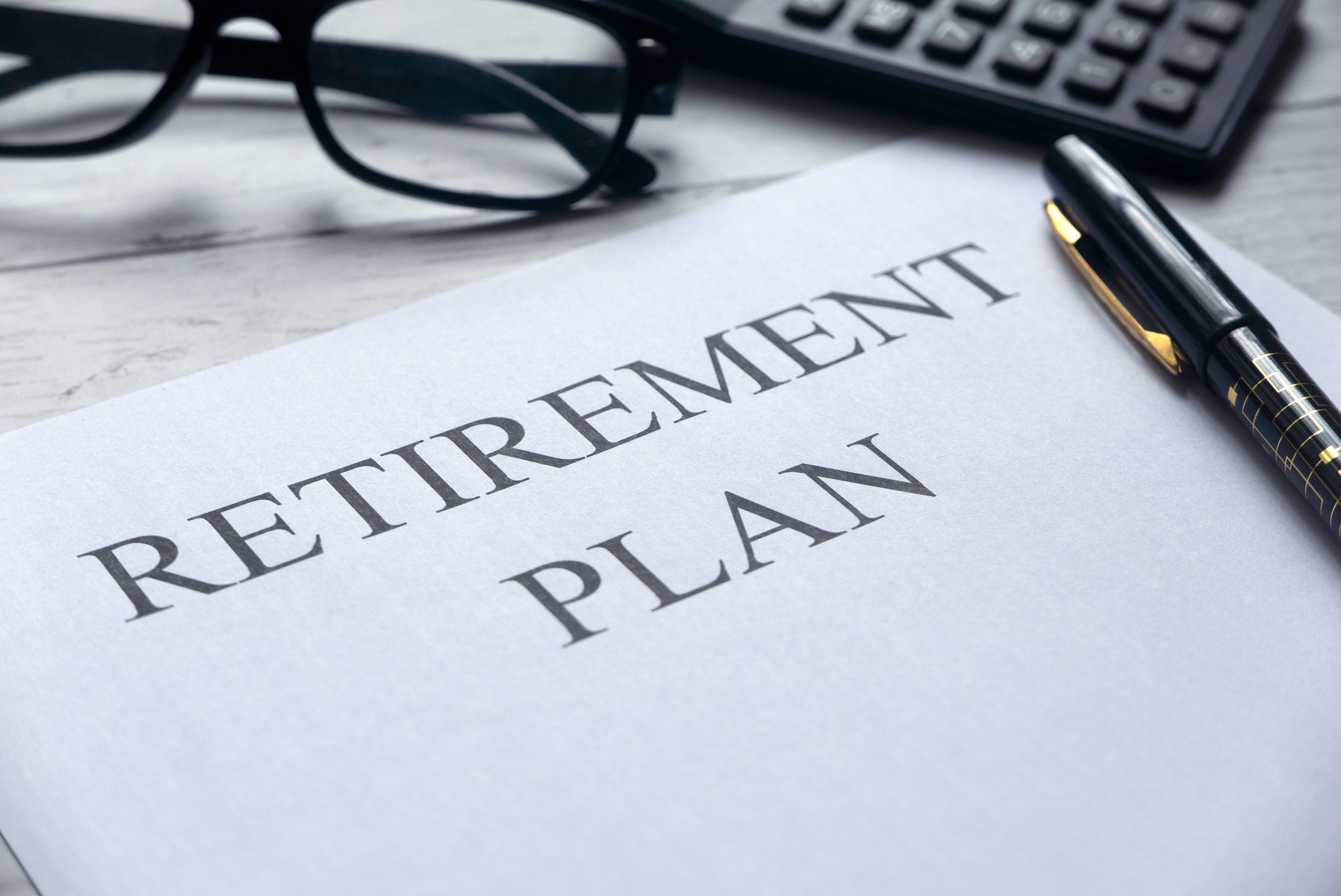Key Takeaways

- Understanding Retirement Plans: Self-employed individuals must create their own retirement strategy, as they do not have access to employer-sponsored plans.
- Variety of Options: Key retirement plans include SEP IRAs, Solo 401(k)s, Traditional IRAs, and Roth IRAs, each with unique features and contribution limits to maximize savings and tax benefits.
- Contribution Limits: For 2023, contribution limits vary by plan – up to $66,000 for SEP IRAs, $22,500 plus employer contributions for Solo 401(k)s, and $6,500 for both Traditional and Roth IRAs.
- Tax Advantages: Different plans offer distinct tax benefits, with Traditional IRAs providing pre-tax contributions and tax deductions, while Roth IRAs allow for tax-free withdrawals in retirement.
- Flexibility and Control: Plans like Solo 401(k)s offer high contribution limits, investment flexibility, and the ability to borrow against your account, benefiting self-employed individuals.
- Alternative Options: Besides the main plans, Cash Balance Plans and Defined Benefit Plans provide additional retirement savings routes, catering to those seeking predictable income or larger contributions.
As a self-employed individual, planning for retirement can feel daunting. Unlike traditional employees with employer-sponsored plans, you have the freedom—and responsibility—to create your own retirement strategy. Understanding your options is crucial for securing your financial future and enjoying the retirement you envision.
Self-employed retirement plans offer a range of choices tailored to fit your unique situation. From Simplified Employee Pension (SEP) IRAs to Solo 401(k)s, each plan comes with its own benefits and contribution limits. By exploring these options, you can find the right fit that maximizes your savings potential while minimizing tax liabilities. Let’s dive into the world of self-employed retirement plans and discover how you can build a robust nest egg for your golden years.
Overview of Self Employed Retirement Plans

Retirement planning is crucial for self-employed individuals running a small business. Understanding various retirement plans helps secure your financial future while maximizing tax benefits.
Importance of Retirement Planning for Self Employed Individuals
Retirement planning allows you to set aside funds for your future. As a self-employed individual, you don’t receive a traditional employer-sponsored plan, making it vital to establish a retirement strategy. Proper planning ensures you can maintain your lifestyle and cover expenses once you stop working. Furthermore, effective retirement plans offer tax advantages, reducing taxable income while building savings.
Types of Self Employed Retirement Plans
Several retirement options cater to self-employed individuals, each with distinct features and benefits:
- Simplified Employee Pension (SEP) IRA: A SEP IRA allows you to contribute up to 25% of your net earnings, with a maximum limit of $66,000 for 2023. This plan is simple to set up and maintain, making it ideal for small business owners.
- Solo 401(k): A Solo 401(k) permits higher potential contributions, allowing you to contribute as both employer and employee. For 2023, you can contribute up to $22,500 as an employee, plus an additional employer contribution, totaling up to $66,000.
- Traditional IRA: A Traditional IRA lets you contribute up to $6,500 annually, with tax deductions reducing your taxable income in the contribution year. This option introduces flexibility in investment choices.
- Roth IRA: A Roth IRA offers tax-free withdrawals during retirement. You can contribute the same amount as a Traditional IRA, but contributions are made with after-tax income, making this plan valuable for future tax planning.
Understanding these self-employed retirement plans enables you to choose the right option for your small business, ensuring you prepare adequately for your future retirement needs.
Traditional IRA vs. Roth IRA

Understanding the distinctions between Traditional IRAs and Roth IRAs is essential for retirement planning as a self-employed individual running a small business. These two retirement accounts offer different tax advantages and flexibility in your financial planning.
Key Differences
- Traditional IRA: You make contributions using pre-tax dollars, reducing your taxable income for the year. Depending on your income and workplace plan coverage, contributions may be fully or partially deductible. This option can lower your current tax burden.
- Roth IRA: You contribute with after-tax dollars, meaning you pay taxes on the income before depositing it into the account. Unlike a Traditional IRA, you won’t receive a tax deduction for contributions, yet your qualified withdrawals in retirement are tax-free.
Tax Implications
- Traditional IRA: Tax benefits occur when you contribute, allowing for tax-deductible contributions that lower your taxable income. However, once you’re retired and begin withdrawals, those amounts are taxed as ordinary income.
- Roth IRA: Benefits manifest during retirement. All qualified withdrawals are tax-free, meaning you avoid taxes on the account’s growth. This can be particularly advantageous for self-employed individuals running small businesses who want to maximize their funds during retirement without incurring tax liabilities.
Solo 401(k) Plans

A Solo 401(k) plan serves as an effective retirement solution for self-employed individuals and small business owners without employees, except for their spouses. This plan allows you to maximize your retirement savings while benefiting from certain tax advantages.
Contribution Limits
For 2025, the contribution limits for a Solo 401(k) plan are:
- Employee Contributions: You can contribute 100% of your compensation, up to $23,500. If you’re 50 or older, an additional catch-up contribution of $7,500 is allowed. If you fall within the 60 to 63 age range, your catch-up contribution rises to $11,250 due to the Secure Act 2.0.
- Employer Contributions: As the employer, you can contribute up to 25% of your net self-employment income. This calculation subtracts half of your self-employment tax and any contributions made for yourself from your net profit.
| Contribution Type | Limit |
|---|---|
| Employee Contribution | Up to $23,500 (plus catch-up if eligible) |
| Employer Contribution | Up to 25% of net self-employment income |
Benefits for Self Employed Individuals
Solo 401(k) plans offer several key benefits tailored for self-employed individuals running a small business:
- High Contribution Limits: The combined maximum contribution exceeds that of many other retirement plans, enabling greater retirement savings.
- Tax Advantages: Contributions reduce your taxable income, lowering your tax liability for the current year.
- Loan Options: You can borrow against your Solo 401(k), providing access to cash in emergencies without penalty.
- Flexibility in Investments: You control investment choices, such as stocks, bonds, or mutual funds, aligning them with your financial strategy.
- Spousal Participation: If your spouse contributes to the business, they can participate in the plan, effectively doubling the retirement saving potential.
Utilizing a Solo 401(k) plan maximizes your retirement savings options as you navigate the demands of running a small business.
Simplified Employee Pension (SEP) IRA

A Simplified Employee Pension (SEP) IRA offers self-employed individuals and small business owners a tax-advantaged retirement savings option. Understanding its eligibility requirements and contribution guidelines helps you make informed decisions for your financial future.
Eligibility Requirements
- Age and Service: You must be at least 21 years old and have worked for your business for at least three of the previous five years to qualify for a SEP IRA.
- Compensation: You need to have received at least $750 in compensation from your small business during the current year. Note that this minimum compensation amount may change annually.
- Exclusions: You might exclude certain employees from participation, such as those covered by a union agreement that negotiates retirement benefits or nonresident alien workers whose wages don’t fall under U.S. tax regulations.
Contribution Guidelines
- Contribution Limits: For 2024, your small business can contribute up to 25% of your compensation, with a maximum contribution of $69,000. This limit increases to $70,000 for 2025, providing significant savings potential as you invest in your retirement.
Other Retirement Options

Self-employed individuals and those running a small business can explore additional retirement options that align with their financial strategies. Cash Balance Plans and Defined Benefit Plans provide alternative routes for enhancing your retirement savings.
Cash Balance Plans
Cash Balance Plans offer a hybrid retirement solution that combines features of defined benefit and defined contribution plans. Under this plan, you receive annual contributions that are guaranteed, adding to your account balance over time. You can contribute up to the greater of 100% of your annual compensation or a maximum of $245,000 in 2024. This plan provides predictable retirement income, allowing you to manage cash flow effectively while running your small business.
Defined Benefit Plans
Defined Benefit Plans deliver a fixed retirement income based on a formula that considers your salary and years of service. They typically require larger contributions compared to other plans, but they offer significant tax benefits. You can contribute up to $245,000 or more per year, depending on your age and how close you are to retirement. This option serves self-employed individuals looking to secure a substantial retirement income, making it an attractive choice for those managing the complexities of running a small business.
Conclusion

Navigating retirement planning as a self-employed individual can feel daunting but it’s crucial for your financial future. By understanding the various retirement options available to you like SEP IRAs and Solo 401(k)s, you can make informed decisions that align with your goals.
Take the time to explore these plans and their unique benefits. This proactive approach not only maximizes your savings but also helps you minimize tax liabilities. With the right strategy in place, you can enjoy peace of mind knowing you’re building a secure retirement while managing your business effectively. Start planning today to ensure a comfortable and fulfilling retirement tomorrow.
Frequently Asked Questions

What retirement plans are available for self-employed individuals?
Self-employed individuals have several retirement options, including Simplified Employee Pension (SEP) IRAs, Solo 401(k)s, Traditional IRAs, and Roth IRAs. Each plan offers unique benefits and contribution limits, making it essential to evaluate which best meets your financial goals.
What is a Solo 401(k) and its benefits?
A Solo 401(k) is a retirement plan designed for self-employed individuals and small business owners without employees. Benefits include high contribution limits, tax advantages, flexibility in investments, and the option for loans, making it an excellent choice to maximize retirement savings.
How do Traditional IRAs differ from Roth IRAs?
Traditional IRAs allow contributions with pre-tax dollars, reducing taxable income in the year contributed, while Roth IRAs involve after-tax contributions, resulting in tax-free withdrawals in retirement. Understanding these differences helps self-employed individuals decide which plan aligns with their financial goals.
What is a SEP IRA and who is eligible?
A Simplified Employee Pension (SEP) IRA is a tax-advantaged retirement option for self-employed individuals and small business owners. To be eligible, you must be at least 21 years old, have worked for the business for three of the last five years, and earned a minimum compensation of $750 in the current year.
What are the contribution limits for a SEP IRA?
For 2024, SEP IRAs allow contributions of up to 25% of compensation, with a maximum contribution limit of $69,000. This increases to $70,000 for 2025, providing significant opportunities for self-employed individuals to save for retirement.
Are there alternative retirement plans for self-employed individuals?
Yes, in addition to SEP IRAs and Solo 401(k)s, self-employed individuals can consider Cash Balance Plans and Defined Benefit Plans. These options provide unique benefits, such as predictable retirement income and larger contribution limits, helping enhance their retirement savings strategy.
Image Via Envato: DragonImages, tehcheesiong, nd3000, kegfire, insidecreativehouse, AboutImages, IrynaKhabliuk, rfaizal707



